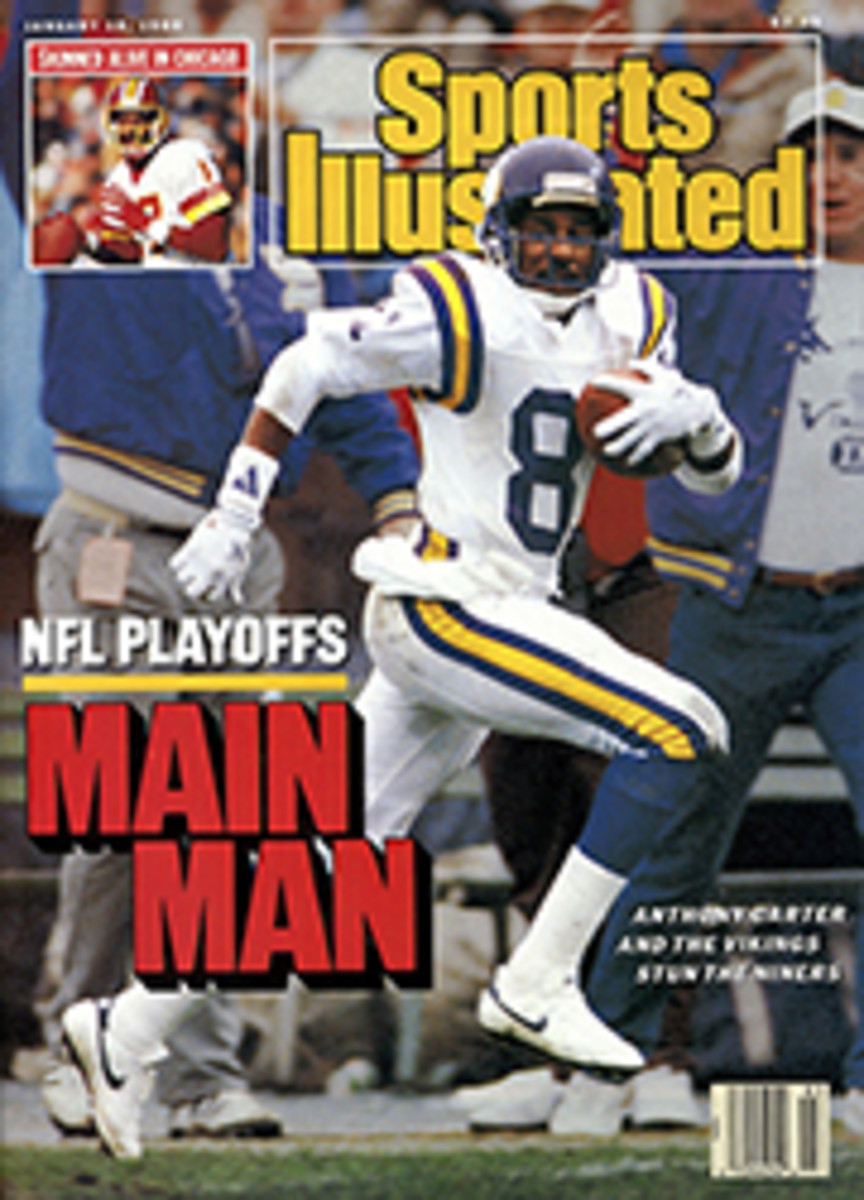
COLLEGE BASKETBALL
THREE'S COMPANY
For everyone out there in the last pockets of resistance, this is the pronouncement from on high: The three-pointer is here to stay. "It has surpassed my fondest expectations," says Ed Steitz, the secretary-editor of the NCAA men's basketball rules committee and the man thought of as the father of the trey. "It's brought the outside shooter back in the game, it's brought the defenses away from the basket, and it's added a new dimension that the game has never seen." To support his contention Steitz proudly points to the results of a questionnaire sent out by the rules committee after last season to 4,000 refs, coaches and writers. Eighty percent of the respondents favored the three-pointer.
"I like the rule because it almost absolutely rules out the zone," says Bradley coach Stan Albeck, whose Braves at week's end led the nation with 8.7 three-point shots per game. "It puts us back in the entertainment business." Says New Mexico coach Gary Colson, a member of the committee that drafted the rule, "I think it's the greatest thing we've ever done in college basketball. That guy from South Dakota who maybe isn't that quick, he's got a chance now."
Still a matter of disagreement, however, is the current distance of the three-point line from the center of the basket: 19'9". Too easy? "We debated that for quite some time," says Steitz, "but we decided to keep it there until the data says it's too close. I think if [the success rate of three-pointers] gets up to 41% or 42%, then we have to look at it as a danger signal." Last season that percentage was around 38%, which, Steitz says, is exactly what the committee expected it to be. This season the percentage has been about the same, though attempts are up. Still, 10 teams are making treys at a 45.9% clip or better; Hofstra leads the nation with a stunning 54.9%. Last season's NBA three-point leaders, the Los Angeles Lakers, nailed only 36.7% of their attempts—from farther away.
So, should the NCAA move its line to match that of the pros, which is four feet deeper most of the way around and 2'3" farther away in the corners? "The three-pointer would just disappear," says Colson, who, along with some other coaches, favors a shift to the international line, which is nine inches beyond the NCAA's. Wherever the three-point line ends up, the bottom line, says Steitz, is clear: "Last year I said that in three years people will be saying, 'What was all that furor about?' I still think that's true."
HOYA HOOL-AGAINS
Big East conference play has begun, and that can mean only one thing: Georgetown is brawling. This time the opponent was previously unbeaten Pitt, which lost both the fight and the game (62-57) at the Capital Centre. Hostilities commenced with 11:27 remaining in the first half when Hoya guard Mark Tillmon elbowed Panther forward Nate Bailey in the back, apparently in protest over the way Bailey had jerked the ball away from him. When Pitt forward Jerome Lane stepped in to defend Bailey, Tillmon took a swing at him. In jumped Georgetown's Ronnie Highsmith, who pulled Lane to the ground, whereupon Tillmon completed the mugging by leaping on the pile and delivering several more blows. In the face of the frenzied howling of the pro-Hoya crowd, the officials heroically ejected only Tillmon, eschewing the usual compromise tactic of tossing out a player from each team.
Georgetown coach John Thompson minimized the fight's significance: "I've never seen a basketball fight where anyone got hurt."
THEN THERE WERE THREE
The first week of conference play left Oklahoma (page 71), Temple and BYU as the only Division I undefeated teams. In addition to Pitt's loss to Georgetown, these titans bit the dust for the first time:
•Top-ranked Kentucky was shocked 53-52 by Auburn. John Caylor, a little-used sophomore reserve forward pressed into service after junior Mike Jones was ruled academically ineligible, canned the game-winner, a three-pointer, with 10 seconds remaining. Tiger freshman center Matt Geiger, another sub-turned-starter, who replaced the injured Jeff Moore, held the Wildcats' Rob Lock to just three points while chipping in with eight. Auburn coach Sonny Smith deserves high marks for his brilliant retooling of the depleted Tiger offense from an up-tempo attack into a deliberate, half-court one. With it, Auburn also knocked off Florida last week 72-67.
•Wyoming fell twice, 68-62 at UTEP and 85-72 at New Mexico. The losses were particularly embarrassing to Cowboy forward Fennis Dembo, who was held to only nine points—11.4 below his average—by the Miners, and allowed Lobo forward Charlie Thomas to burn him for 27 points. Adding to Dembo's embarrassment was the fact that his mother, Clariss, and sister, Fenise, who had never seen him play college ball, drove 564 miles from their home in San Antonio to see him flop at UTEP. Undaunted, the distaff Dembos drove another 266 miles to Albuquerque.
•Nevada-Las Vegas lost 62-60 to UC Santa Barbara. The Gauchos' program, floundering just a few years ago, is now thriving, with an 11-1 record at week's end. Tickets to games at Santa Barbara's 6,000-seat Campus Events Center have become so hard to get that the school is considering showing closed-circuit telecasts in its old on-campus gym.
UNHAPPY LANDING
When Clarissa Davis, Texas's stellar 6'1" junior center, went into the air to intercept a pass during an 86-75 win over Rutgers in the Orange Bowl Classic tournament on Dec. 29 in Miami, she leaped "higher than any woman I've ever seen," according to Lady Longhorns coach Jody Conradt. When Davis landed, she collapsed to the floor, the ligaments in her left knee badly torn. The injury triggered unusually strong emotions. Iowa coach Vivian Stringer, who was watching (and whose team would beat Texas 75-65 in the tournament final the next night), said, "I've never been so hurt seeing an athlete get hurt. Women's basketball needs her. It's sickening. I'm just heartbroken."
Hurt even more were the Lady Longhorns, who also lost 88-58 to Ohio State and kissed their No. 1 ranking goodbye. Texas hasn't lost consecutive regular-season games since 1981. The worst news is that Davis's injury will probably prevent her from playing on the U.S. Olympic team next September. There was a ray of sunshine, though: Now playing Davis's position is Doreatha Conwell, who suffered a similar injury 11 months earlier.
SHORT SHOTS
Need an explanation for Villanova's surprising early success? Look no further than the play of 7'2" center Tom Greis, who lost 35 pounds in an off-season conditioning program and at week's end was averaging 12.2 points and 5.7 rebounds for the 11-3 Wildcats....
Florida's four losses have made its fans' behavior so ugly that the Gators must put up with crowd abuse even when they're winning at home. Coach Norm Sloan was so incensed by the booing during Florida's 77-55 win over Towson State that he shook his fist and yelled to the crowd, "This is deplorable!" ...How's this for a halftime score: Kentucky 55, Mississippi State 17....
The once-proud Marquette program is in disrepair. The Warriors' 78-57 loss at Kansas State was their 11th straight road failure, dating to last season....
Purdue guard Troy Lewis has gone on a tear since he stopped wearing the steel plate in his left shoe that protected a bone in his foot, that he broke before the season. He scored 108 points in the Boilermakers' wins over Wake Forest, Illinois, Miami (Fla.), Ohio State and Iowa....
Northern Arizona beat Central Connecticut 72-70 in Tuba City, Ariz., in the first Division I basketball game ever played on an Indian reservation.
[originallink:10652521:702677]
PHOTO
GEORGE TIEDEMANN
The three-pointer's popularity makes Steitz a proud papa.
PHOTO
CARL SKALAK
An injury to Texas's Davis may be costly at the Olympics.
PLAYER OF THE WEEK
DAREN QUEENAN
Lehigh's 6'5" senior forward ran his average to 30.4 points a game, second best in Division I, while leading the Engineers to three wins, with 24 points at Columbia, 40 against Brown and 41 at Bucknell.

